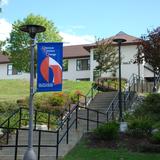- The mission of Dutchess Community College is to provide open access to affordable, quality post-secondary education to citizens of Dutchess County and others. As a comprehensive community college, DCC offers college transfer and occupational/technical degree programs, certificate programs, lifelong learning opportunities, and service to the community. The College provides educational experiences that enable qualified students to expand their academic capabilities and further develop thinking and decision making skills. By providing a full collegiate experience, the College seeks to ensure that all students achieve their individual potential.
School Highlights
Dutchess Community College serves 9,054 students (32% of students are full-time).
The college's student:teacher ratio of 18:1 is higher than the state community college average of 13:1.
Minority enrollment is 48% of the student body (majority Hispanic), which is less than the state average of 62%.
Quick Stats (2025)
- Enrollment: 9,054 students
- In-state tuition: $3,635
- Out-state tuition: $6,835
- Student:teacher ratio: 18:1
- Minority enrollment: 48%
- Source: Integrated Postsecondary Education Data System (IPEDS)
Top Rankings
Dutchess Community College ranks among the top 20% of public schools in New York for:
Category
Attribute
Affordability
Community Size
Debt For Students
School Overview
The teacher population of 503 teachers has stayed relatively flat over five years.
Dutchess Community College
(NY) Community College Avg.
Carnegie Classification
Associate's Colleges: High Transfer-Mixed Traditional/Nontraditional
Baccalaureate/Associate's Colleges: Mixed Baccalaureate/Associate's
Institution Level
At least 2 but less than 4 years
At least 2 but less than 4 years
Institution Control
Public
Private not-for-profit
Total Faculty
503 staff
158 staff
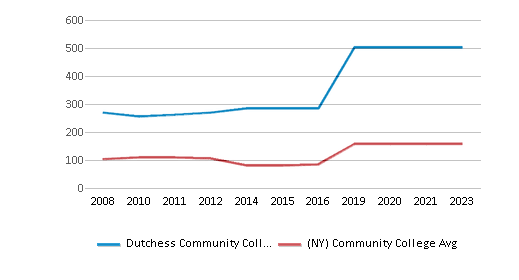
School Calendar
Student Body
The student population of Dutchess Community College has stayed relatively flat over five years.
The student:teacher ratio of 18:1 has increased from 16:1 over five years.
The Dutchess Community College diversity score of 0.67 is less than the state average of 0.76. The school's diversity has grown by 7% over five years.
Total Enrollment
9,054 students
746 students
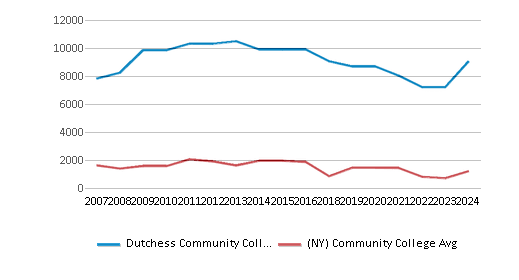
Student : Teacher Ratio
18:1
13:1
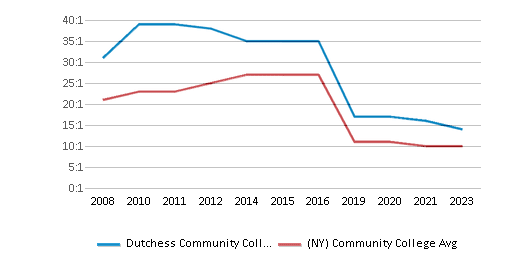
# Full-Time Students
2,913 students
519 students
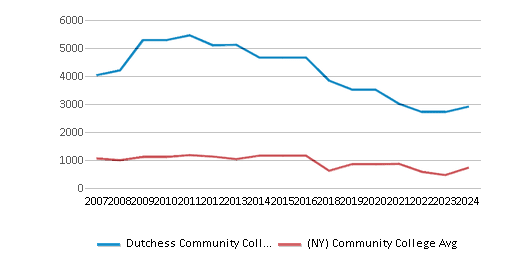
# Part-Time Students
6,141 students
514 students
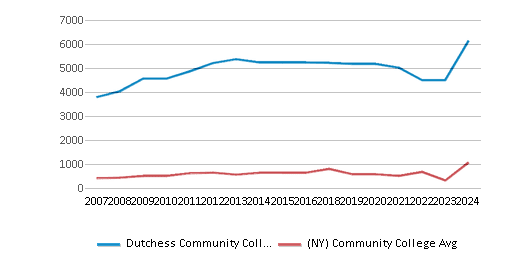
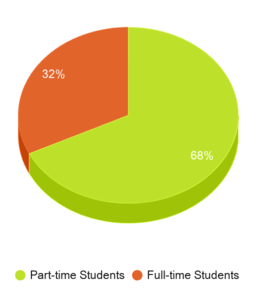
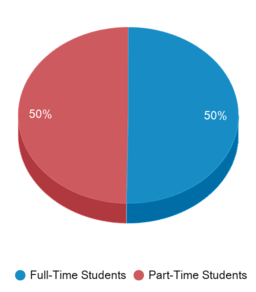
# Enrollment Undergraduate
905 students
357 students
# Full-Time Undergraduate Students
2,913 students
502 students
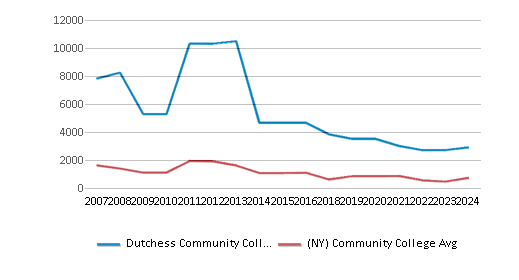
# Full-Time Graduate Students
n/a
44 students
# Part-Time Undergraduate Students
6,141 students
528 students
# Part-Time Graduate Students
n/a
41 students
Total Dormitory Capacity
465 students
382 students
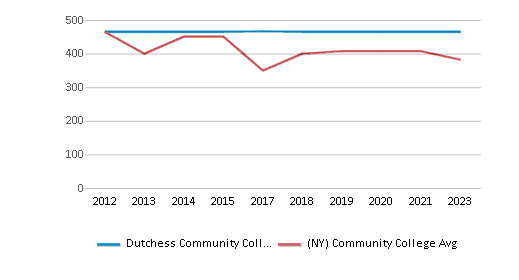
% American Indian/Alaskan
n/a
n/a
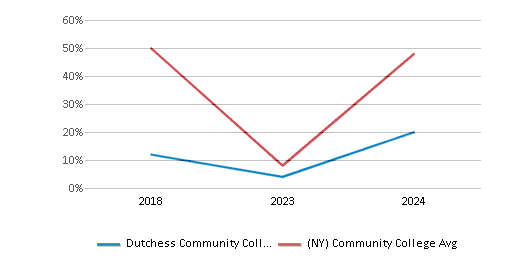
% Asian
4%
8%
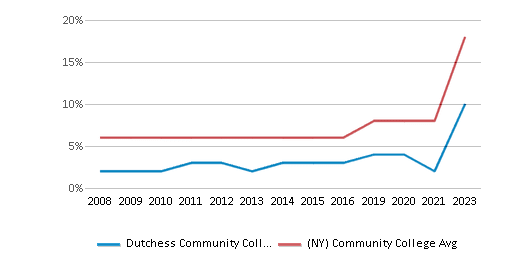
% Hispanic
22%
23%
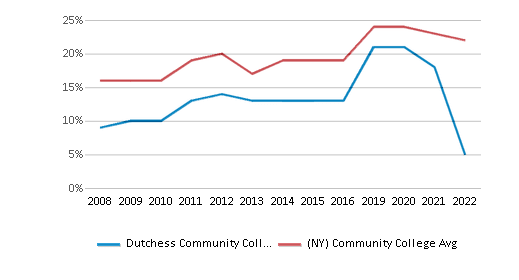
% Black
10%
18%
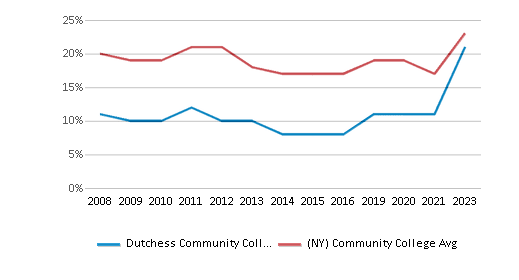
% White
52%
38%
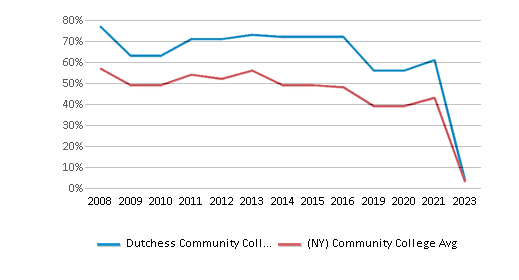
% Hawaiian
n/a
2%
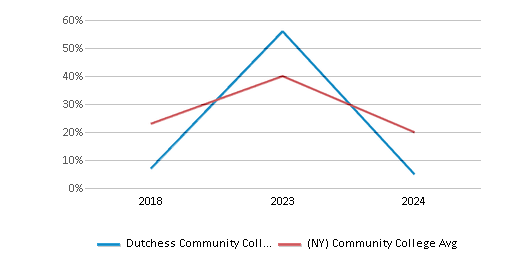
% Two or more races
4%
3%
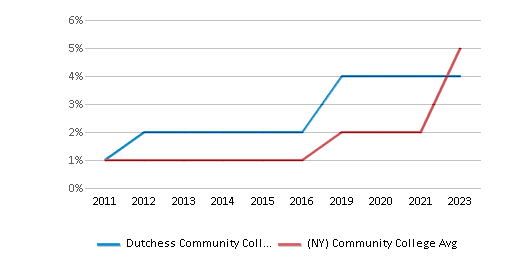
% Non Resident races
1%
3%
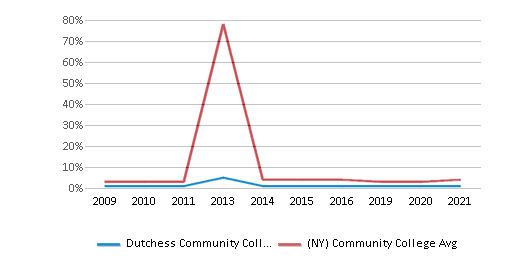
% Unknown races
6%
5%
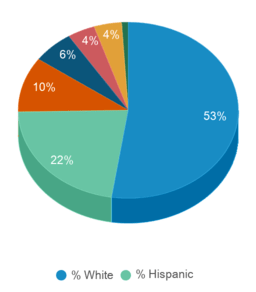
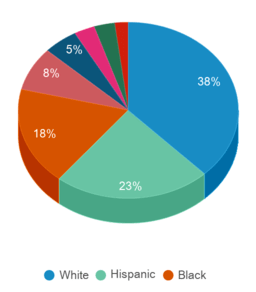
Diversity Score
0.67
0.76
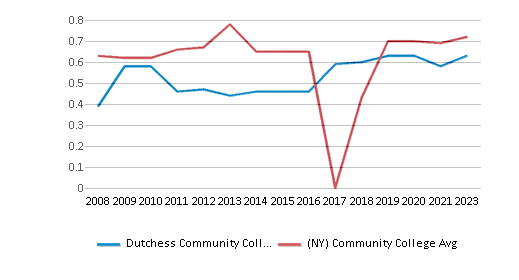
College Completion Rate (Students who graduate in less than 4 years)
0.2733%
0.3518%
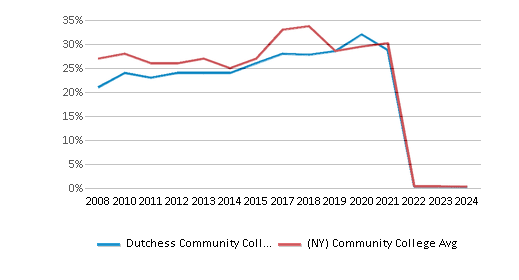
College Completion Rate (Students who graduate in 4 years or more than 4 years)
n/a
0.3957%
Average Graduate Earnings (10 Years)
$37,700
$35,200
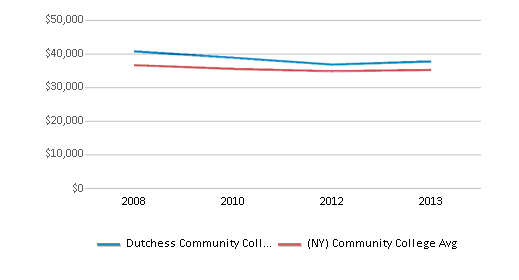
Tuition and Acceptance Rate
The public in-state tuition of $3,635 is less than the state average of $5,720. The in-state tuition has declined by 25% over four years.
The public out-state tuition of $6,835 is less than the state average of $10,320. The out-state tuition has declined by 26% over four years.
In-State Tuition Fees
$3,635
$5,720
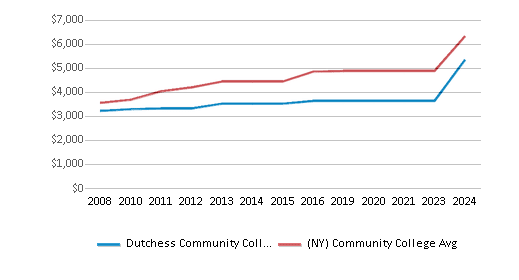
Out-State Tuition Fees
$6,835
$10,320

% Students Receiving Some Financial Aid
78%
88%
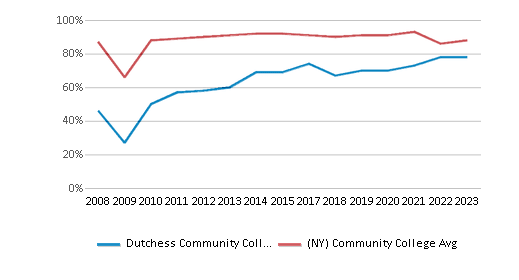
Median Debt for Graduates
$9,750
$13,841
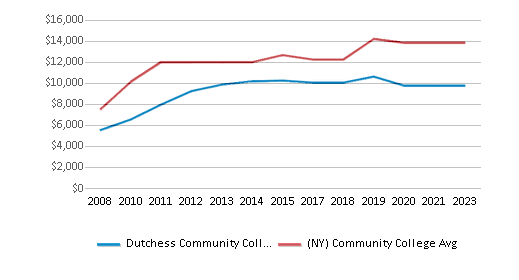
Median Debt for Dropouts
$5,500
$5,500
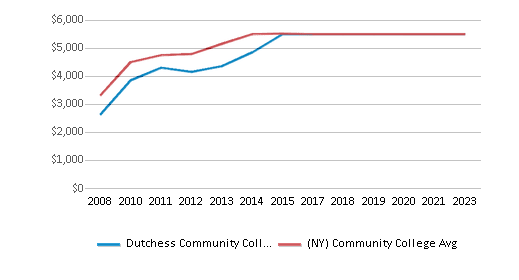
Acceptance Rate
n/a
74%
SAT Reading
n/a
475
SAT Math
n/a
505
SAT Writing
n/a
485
ACT Composite
n/a
20
ACT English
n/a
18
ACT Math
n/a
20
Source: 2024 (or latest year available) Integrated Postsecondary Education Data System (IPEDS) , School Administrators
School Notes
- Founded in 1957, DCC has the lowest tuition of any college or university in the state. The college offers Associate's degrees and Certificates in over 60 academic areas of study. Our curriculums include career-oriented programs as well as those designed for successful transfer to a four-year college or university. Dutchess Community College is situated on a 130-acre hilltop campus with fantastic scenery and a park-like setting. Graced with lovely buildings and facilities, the campus is also enhanced by beautiful landscaping and a broad array of sculptures and other art. On fair-weather days, many of the College's 8,000 students can be seen strolling along the walkways or studying in one of the many attractive outdoor settings. Class sizes at Dutchess are small, with the average class size being less than 20 students. Dutchess was the first college in the state to offer a comprehensive jointly-registered transfer program in teacher education (with SUNY New Paltz), covering birth through twelfth grade. The college is accredited by the Middle States Association of Schools and Colleges.
Frequently Asked Questions
How much does Dutchess Community College cost?
Dutchess Community College's tuition is approximately $3,635 for In-State students and $6,835 for Out-State students.
What is Dutchess Community College's ranking?
Dutchess Community College ranks among the top 20% of community college in New York for: Least expensive tuition, Largest student body and Least debt for graduating students.
Recent Articles

Obtaining Your Bachelor's Degree at a Community College
Explore the evolving landscape of community colleges offering bachelor's degrees, addressing affordability, accessibility, and workforce needs.

A to Z of Community College Certificates and Courses
From business and healthcare to technology and skilled trades, the article showcases the breadth of options available to students seeking to enhance their knowledge, develop new skills, or pursue career advancement.

What is a Community College?
This comprehensive guide explains what a community college is, its history, and its role in higher education. It covers the types of programs offered, differences from four-year colleges, benefits of attending, and important considerations for prospective students, providing valuable insights for those exploring educational options.






